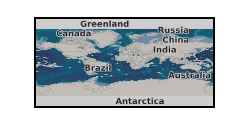Membranes
Type of resources
Topics
Keywords
Contact for the resource
Provided by
Years
Formats
Update frequencies
-

Posters and presentations from the UKCCSRC Call 1 Project: Mixed matrix membranes for post combustion carbon capture (Mar 2013 to Dec 2015). Membrane processes are a promising alternative to the more classical post-combustion capture technologies due to the reduced maintenance of the process, the absence of dangerous solvents and their smaller footprint. This project aims at supporting the development of new mixed matrix membranes for post-combustion applications. Mixed matrix membranes (MMMs) are composite materials formed by embedding inorganic fillers into a polymeric matrix in order to overcome the upper bound and combine the characteristics of the two solid phases: mechanical properties, economical processing capabilities and permeability of the polymer and selectivity of the filler. Despite several studies on the concept, the interactions between the two phases and their effect on the transport properties are not well understood. Yet, this fundamental knowledge is crucial in order to design the reliable materials needed for real-world-applications.
-

Posters and presentations from the UKCCSRC Call 1 Project: Mixed matrix membranes for post combustion carbon capture (Mar 2013 to Dec 2015). Membrane processes are a promising alternative to the more classical post-combustion capture technologies due to the reduced maintenance of the process, the absence of dangerous solvents and their smaller footprint. This project aims at supporting the development of new mixed matrix membranes for post-combustion applications. Mixed matrix membranes (MMMs) are composite materials formed by embedding inorganic fillers into a polymeric matrix in order to overcome the upper bound and combine the characteristics of the two solid phases: mechanical properties, economical processing capabilities and permeability of the polymer and selectivity of the filler. Despite several studies on the concept, the interactions between the two phases and their effect on the transport properties are not well understood. Yet, this fundamental knowledge is crucial in order to design the reliable materials needed for real-world-applications.
 BGS Data Catalogue
BGS Data Catalogue